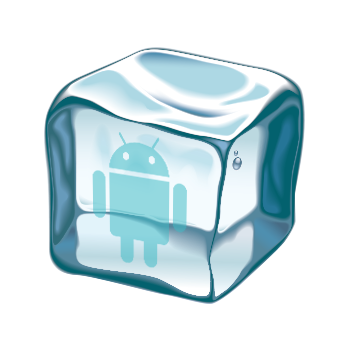#Download
buildscript {
dependencies {
classpath 'com.neenbedankt.gradle.plugins:android-apt:1.8'
}
}
apply plugin: 'com.neenbedankt.android-apt'
dependencies {
compile 'fr.xebia.android.freezer:freezer:2.0.3'
provided 'fr.xebia.android.freezer:freezer-annotations:2.0.3'
apt 'fr.xebia.android.freezer:freezer-compiler:2.0.3'
}#It's always better with a context
Don't forget to initialise Freezer in your application:
public class MyApplication extends Application {
@Override public void onCreate() {
super.onCreate();
Freezer.onCreate(this);
}
}#Usage
Use Annotations to mark classes to be persisted:
@Model
public class User {
int age;
String name;
Cat cat;
List<Cat> pets;
}@Model
public class Cat {
@Id long id;
String name;
}#Persist datas
Persist your data easily:
UserEntityManager userEntityManager = new UserEntityManager();
User user = ... // Create a new object
userEntityManager.add(user);#Querying
Freezer query engine uses a fluent interface to construct multi-clause queries.
##Simple
To find all users:
List<User> allUsers = userEntityManager.select()
.asList();To find the first user who is 3 years old:
User user3 = userEntityManager.select()
.age().equalsTo(3)
.first();##Complex
To find all users
- with
name"Florent" - or who own a pet with
named"Java"
you would write:
List<User> allUsers = userEntityManager.select()
.name().equalsTo("Florent")
.or()
.cat(CatEntityManager.where().name().equalsTo("Java"))
.or()
.pets(CatEntityManager.where().name().equalsTo("Sasha"))
.asList();##Selectors
//strings
.name().equalsTo("florent")
.name().notEqualsTo("kevin")
.name().contains("flo")
.name().in("flo","alex","logan")
//numbers
.age().equalsTo(10)
.age().notEqualsTo(30)
.age().greatherThan(5)
.age().between(10,20)
.age().in(10,13,16)
//booleans
.hacker().equalsTo(true)
.hacker().isTrue()
.hacker().isFalse()
//dates
.myDate().equalsTo(OTHER_DATE)
.myDate().notEqualsTo(OTHER_DATE)
.myDate().before(OTHER_DATE)
.myDate().after(OTHER_DATE)##Aggregation
The QueryBuilder offers various aggregation methods:
float agesSum = userEntityManager.select().sum(UserColumns.age);
float agesAverage = userEntityManager.select().average(UserColumns.age);
float ageMin = userEntityManager.select().min(UserColumns.age);
float ageMax = userEntityManager.select().max(UserColumns.age);
int count = userEntityManager.select().count();The QueryBuilder offers a limitation method, for example, getting 10 users, starting from the 5th:
List<User> someUsers = userEntityManager.select()
.limit(5, 10) //start, count
.asList();#Asynchronous
Freezer offers various asynchronous methods:
##Add / Delete / Update
userEntityManager
.addAsync(users)
.async(new SimpleCallback<List<User>>() {
@Override
public void onSuccess(List<User> data) {
}
});##Querying
userEntityManager
.select()
...
.async(new SimpleCallback<List<User>>() {
@Override
public void onSuccess(List<User> data) {
}
});##Observables
userEntityManager
.select()
...
.asObservable()
... //rx operations
.subscribe(new Action1<List<User>>() {
@Override
public void call(List<User> users) {
}
});#Entities
Freezer makes it possible, yes you can design your entities as your wish:
@Model
public class MyEntity {
// primitives
[ int / float / boolean / String / long / double ] field;
//dates
Date myDate;
// arrays
[ int[] / float[] / boolean[] / String[] / long[] / double ] array;
// collections
[ List<Integer> / List<Float> / List<Boolean> / List<String> / List<Long> / List<Double> ] collection;
// One To One
MySecondEntity child;
// One To Many
List<MySecondEntity> childs;
}#Update
You can update a model:
user.setName("laurent");
userEntityManager.update(user);#Id
You can optionnaly set a field as an identifier:
@Model
public class MyEntity {
@Id long id;
}The identifier must be a long
#Ignore
You can ignore a field:
@Model
public class MyEntity {
@Ignore
int field;
}#Logging
You can log all SQL queries from entities managers:
userEntityManager.logQueries((query, datas) -> Log.d(TAG, query) }#Migration
To handle schema migration, just add @Migration(newVersion) in a static method,
then describe the modifications:
public class DatabaseMigration {
@Migration(2)
public static void migrateTo2(Migrator migrator) {
migrator.update("User")
.removeField("age")
.renameTo("Man");
}
@Migration(3)
public static void migrateTo3(Migrator migrator) {
migrator.update("Man")
.addField("birth", ColumnType.Primitive.Int);
}
@Migration(4)
public static void migrateTo4(Migrator migrator) {
migrator.addTable(migrator.createModel("Woman")
.field("name", ColumnType.Primitive.String)
.build());
}
}Migration isn't yet capable of:
- changing type of field
- adding/modifying One To One
- adding/modifying One To Many
- handling collections/arrays
#Changelog
##1.0.1
Introduced Migration Engine.
##1.0.2
- Support long & double
- Support arrays
- Improved QueryBuilder
- Refactored cursors helpers
##1.0.3
- Support dates
- Added unit tests
- Fixed one to many
##1.0.4
- Added @Id & @Ignore
##1.0.5
- Model update
##2.0.0
- Async API
- Support Observables
- Added @DatabaseName
##2.0.1
- Limit
- Added query.in(...values...)
- Freezer.onCreate is no longer dynamic
#A project initiated by Xebia
This project was first developed by Xebia and has been open-sourced since. We will continue working on it. We encourage the community to contribute to the project by opening tickets and/or pull requests.
Copyright 2015 Xebia, Inc.
Licensed under the Apache License, Version 2.0 (the "License");
you may not use this file except in compliance with the License.
You may obtain a copy of the License at
http://www.apache.org/licenses/LICENSE-2.0
Unless required by applicable law or agreed to in writing, software
distributed under the License is distributed on an "AS IS" BASIS,
WITHOUT WARRANTIES OR CONDITIONS OF ANY KIND, either express or implied.
See the License for the specific language governing permissions and
limitations under the License.



